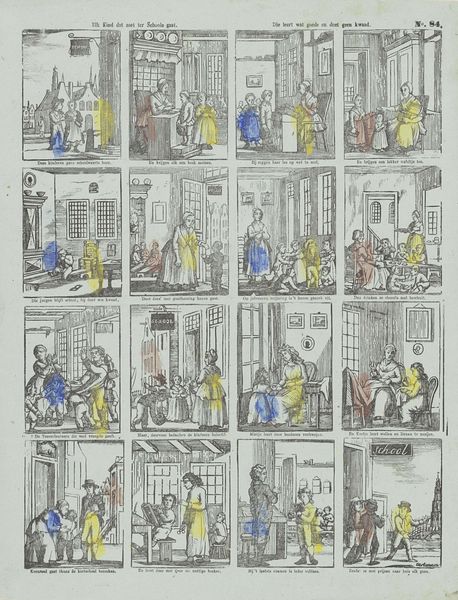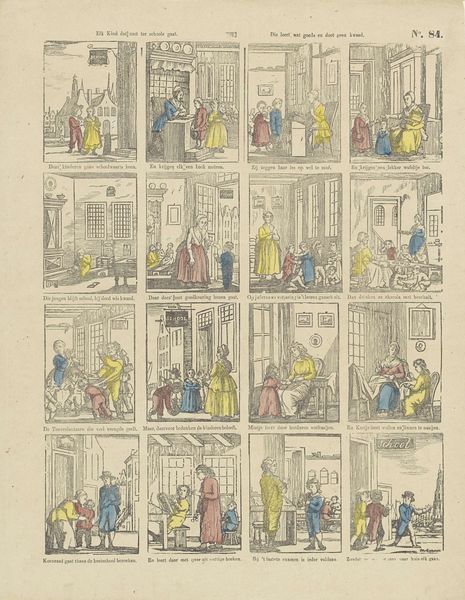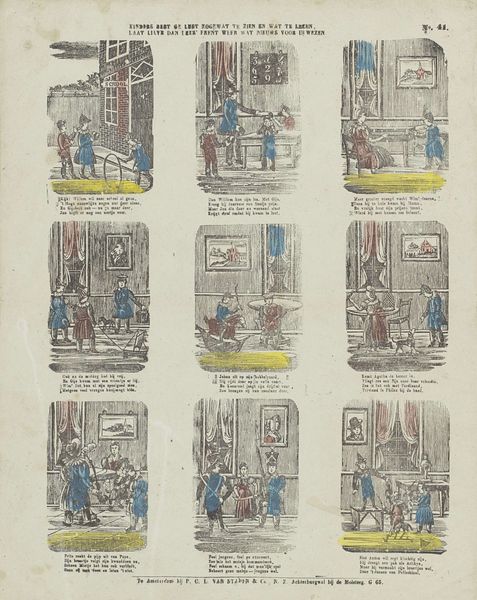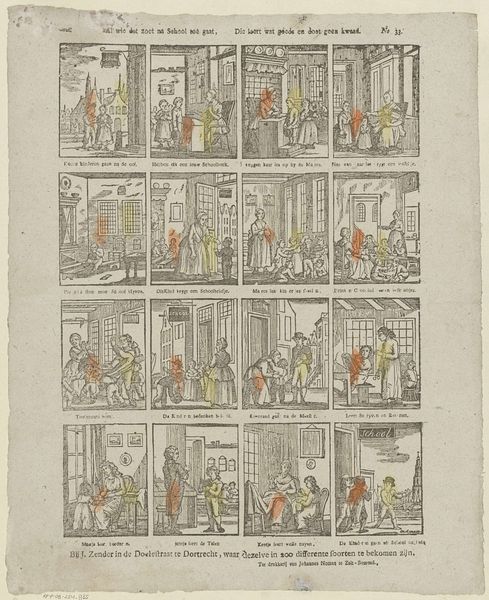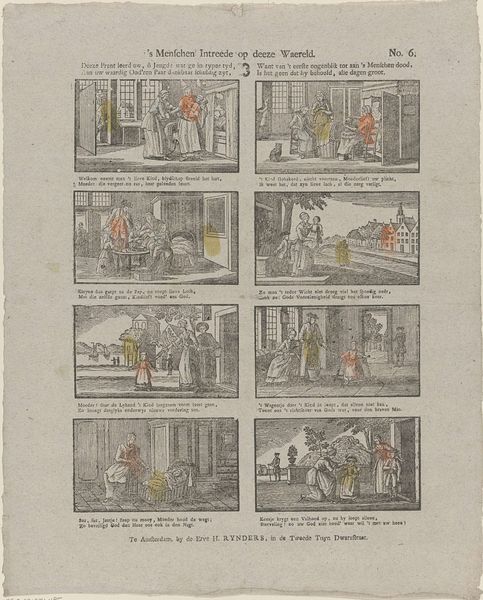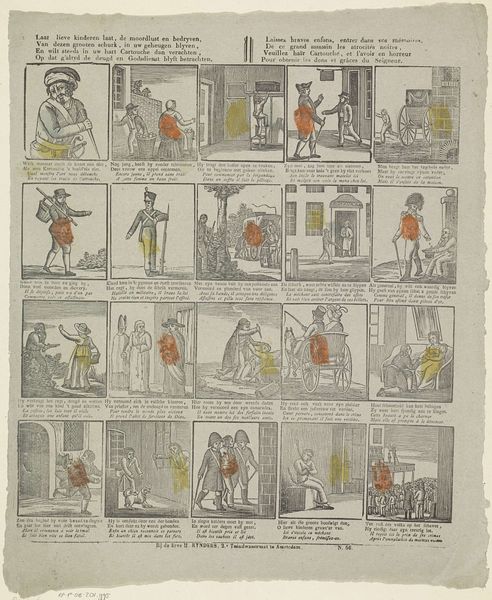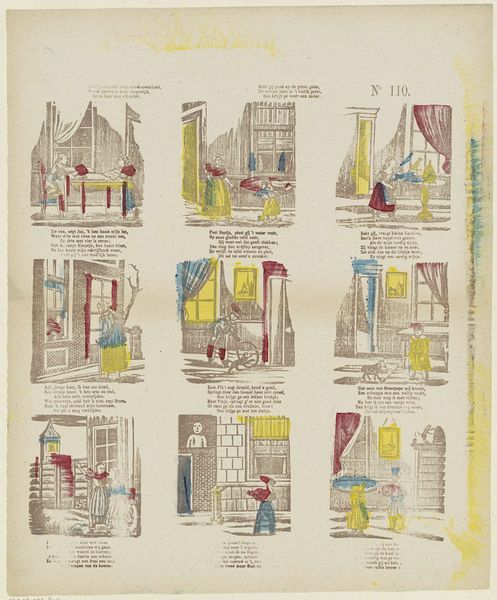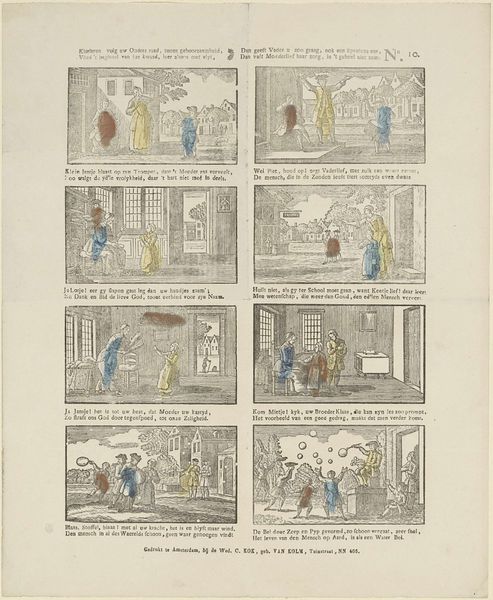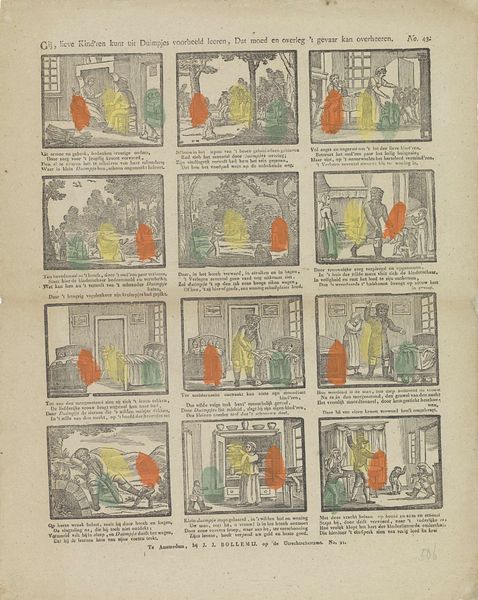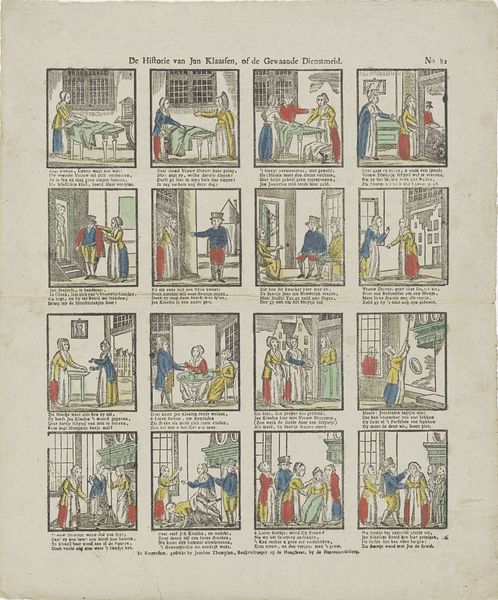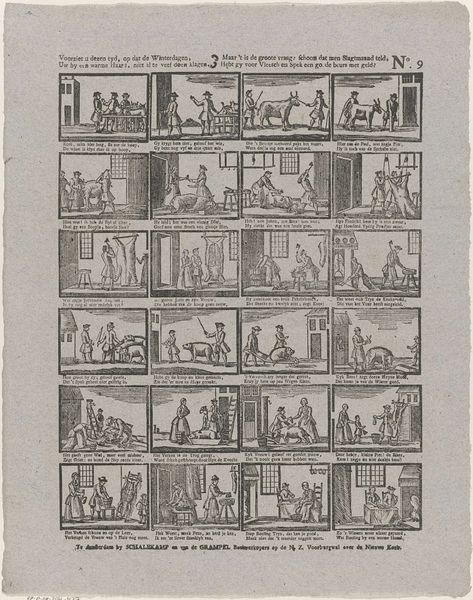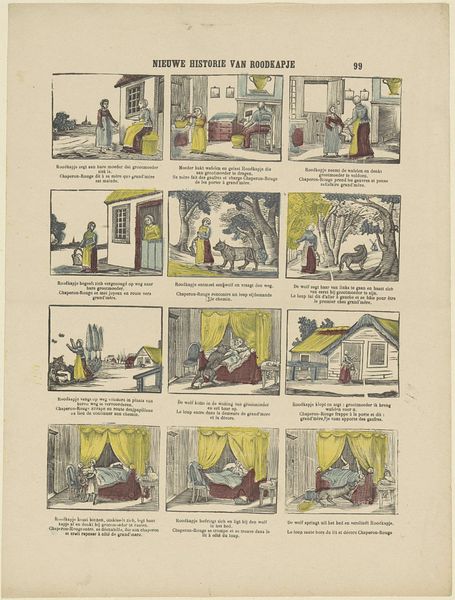
Elk kind dat zoet ter schoole gaat. / Die leert wat goeds en doet geen kwaad 1850 - 1870
0:00
0:00
gerritoortman
Rijksmuseum
#
comic strip sketch
#
narrative-art
# print
#
figuration
#
child
#
folk-art
#
comic
#
genre-painting
Dimensions: height 373 mm, width 296 mm
Copyright: Rijks Museum: Open Domain
Editor: This is "Elk kind dat zoet ter schoole gaat. / Die leert wat goeds en doet geen kwaad," a print made sometime between 1850 and 1870 by Gerrit Oortman, and it's here in the Rijksmuseum. It's a little bit like a comic strip, showing scenes of children in school. I’m curious, how do you read a narrative like this in its historical moment? Curator: Well, consider that the title translates roughly to “Every child that goes sweetly to school, learns what is good and does no harm.” It’s not just a quaint genre scene; it's a visual argument, reflecting anxieties and aspirations around education, social control, and the shaping of young minds during a period of significant social change. The visual narrative emphasizes the virtues of obedience and discipline within the classroom. Does it strike you as purely celebratory? Editor: Hmm, at first glance, maybe. But now that you mention social control, I wonder about the power dynamics at play. Who defines what is "good," and for whom? Curator: Exactly! We need to examine how this artwork participates in the construction of ideal childhoods and the reinforcement of bourgeois values. Think about the rise of public education systems during this period – who had access, and what was the curriculum designed to instill? Also, how does this portrayal align with or challenge other representations of children at the time, particularly regarding class and gender? Editor: So, it's less about a straightforward depiction of school life, and more about the ideas about childhood that the artist wanted to promote? And perhaps also who was excluded from that vision of education? Curator: Precisely. Analyzing the composition, the settings, and the figures represented reveals the ideologies embedded within seemingly simple imagery. It asks us to consider how power operates in the everyday, shaping not only what is taught, but also who is taught and why. Editor: That's a very different way of viewing it than I initially had. I see now that what seemed like simple illustrations are really charged with cultural meaning. Thanks for making me think about this more deeply!
Comments
No comments
Be the first to comment and join the conversation on the ultimate creative platform.
